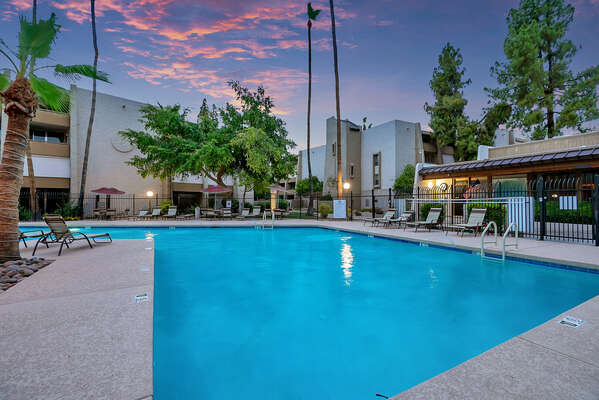Arizona is a relatively new addition to the United States, only become a recognized state just over 100 years ago in 1912, but that does not mean we only have a short chapter in the history books of the world. And in a world that likes to tear down the old to make way for the new, our hometown of Scottsdale is dedicated to preserving the history, ensuring that when your journey through history brings you to doorstep, there will be plenty to keep you entertained and engaged. This guide to a historic exploration of Scottsdale will give you a little something to look forward to in the days and weeks that lead up to your vacation in the West’s Most Western Town.
Day 1: The Old West Lives On
Scottsdale is known as the West’s Most Western Town, and if you want a better idea of what all that encompasses, your first day in town is a great day to visit the past in a couple of local museums. Starting out your morning with a healthy and delicious brunch at the Acadia Farms Café, 7025 E 1st Avenue, where you can fill up on cheddar quiche or gruyere and Parisian ham crepes, your first stop of the day may not be where the West was won, but it definitely showcases the joys in that era: Scottsdale Historical Museum at 7333 E Scottsdale Mall. Providing an in-depth peek into the days when cattle drives still blocked the dirt streets and children gathered in one room schoolhouses to get their education, this compact museum houses memories of a simpler, albeit somewhat wilder time in Scottsdale history and includes entrance to a Scottsdale landmark, the Little Red Schoolhouse. Closed in summer months and Mondays and Tuesdays every week and built of red brick over 100 years ago, this is where early settler’s children spent their days in school. Finish off this beautiful day of sunshine and exploration with an authentic meal from Old Town Tortilla Factory, located back in Old Town, at 6910 E Main Street. Housed inside one of the towns original adobe homes built over 75 years ago, the echoes of history whisper loudly in this stunning restaurant!
Day 2: Venturing Out
Your Scottsdale journey into the past doesn’t need to stop at the borders of our town, as the towns and cities on its outskirts offer historic sites as well. The Petersen House Museum, 1414 W Southern Avenue in Tempe, was built in 1892 and is a stunning example of Queen Anne architecture. This oldest brick house in the Salt River Valley is a testament to a time when buildings were built to last, and at Christmas, pays stunning tribute to Christmases of the past, being decorated to reflect that time in history.
Since you are already in Tempe, why not take a few minutes to drive past our ASU Gammage Auditorium, or better yet, purchase tickets to a show that may be performing while you are here? Designed by world famous architect Frank Lloyd Wright during the last two years of his life, its resemblance to a well frosted birthday cake has long been noted.
And the Pioneer Living History Museum, 3901 W Pioneer Road in Phoenix, paints a crystal-clear picture of what life was like in the valley before the days of automobiles and air conditioning, featuring 30 historic original and reconstructed buildings from late 19th and early 20th centuries.
Want to end your second night in Scottsdale on a high note? Enjoy dinner, live entertainment, and Western dance with a visit to Harold’s Cave Creek Corral, open since the 1930s and located at 6895 E Cave Creek Road in Cave Creek.
Day 3: The Original Settlers
Our history didn’t begin with American settlers moving in and staking claim; the entire state of Arizona was once home to the original settlers, and our local museums reflect their heritage as well. Home to 22 different tribes, the Hohokam lived in Mesa about 2000 years ago, creating an empire that lasted for 1500 years. The word Hohokam means “those who are gone,” but this group of people live on in local museums and landmark sites such as the Park of the Canals, 1710 N Horne and the Mesa Grande Ruins, in the cultural park at the Arizona Museum of Natural History, 53 N MacDonald. Park of the Canals offers peeks into the ancient Indian canals that were constructed in 700 BC, and Mesa Grande Ruins is where you can see one of two Indian mounds. The second mound can be seen at the Pueblo Grande Museum Archeological Park, now known as S’edav Va’aki Museum and located at 4610 E Washington in Phoenix. Want to delve deeper into the Native American lifestyle? Dinner at the Fry Bread House, 4545 N 7th Avenue in Phoenix, will provide a delicious insight into the eating habits of these native people!
Reserve your favorite I Love Scottsdale sanctuary today!


